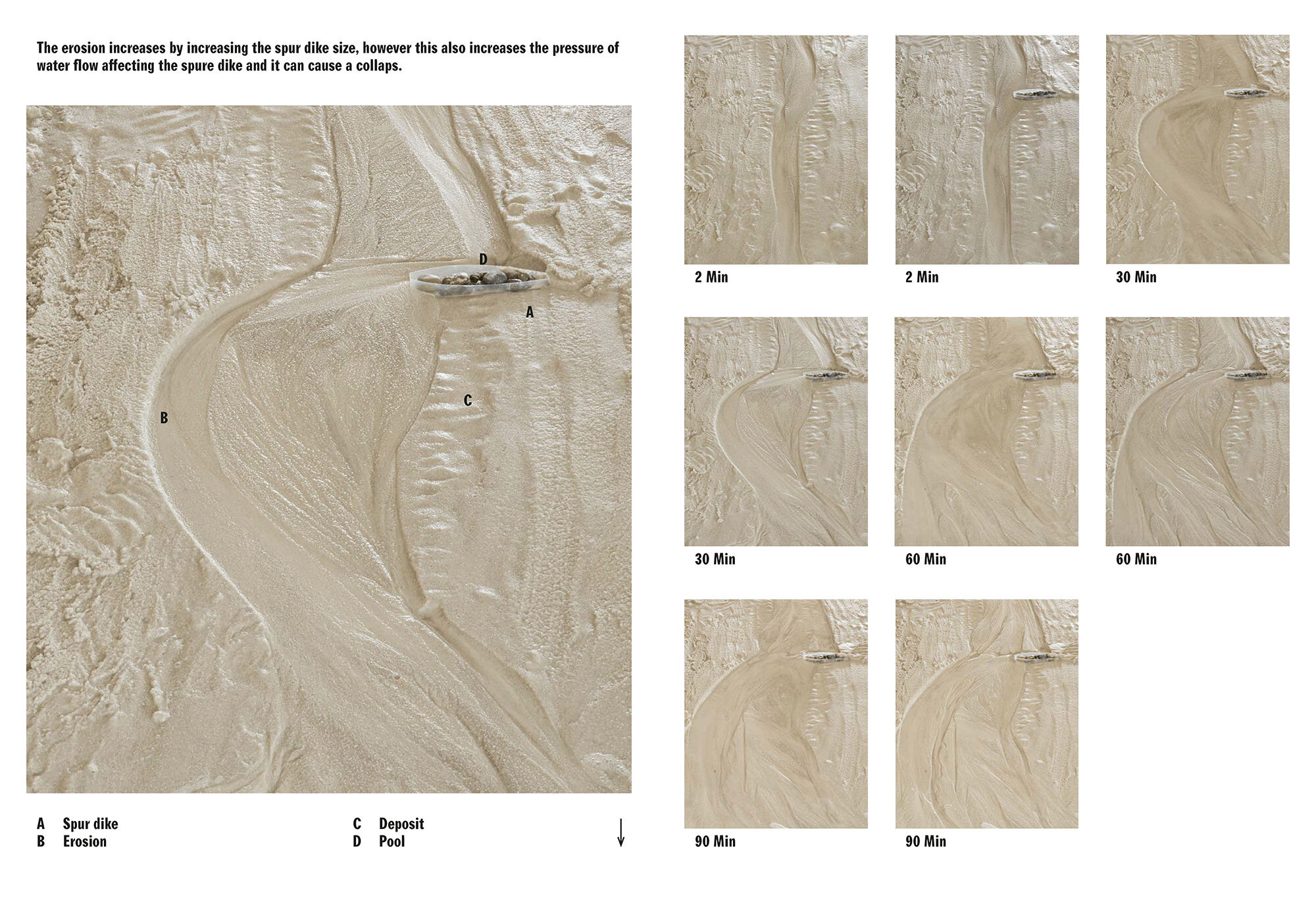2020-diploma-holtrop-ethz
https://works.arch.ethz.ch/thesis/river-acting-thema-c
Studio Anne Holtrop ETH Zürich
RIVER ACTING Master’s Thesis
Jonas Kissling
River Acting is a site specific engagement, which can bring locals in Ilanz closer to the dynamical river, the river sediment and its manipulation. An artistic but at the same time an infrastructural intervention for preventing future flood damages.
The river bed itseld is the place of bridging. The engagement with the river and its water flow arises a question: How do we deal with the constant and irreversible movement of the river and how do we use the water flow to build?
The average river sediment transport that is passing the tributary in Ilanz and got deposit in the Wetland of Cauma during the flood events was measured as 26’000 m3/year between 2005 and 2009 by Canton Graubünden.
How does the river sediment move with the water flow and how can it be manipulated? The test under a constant water flow shows the lateral movement of a dynamical river bed. Experiments to shape the riverbed by building resistant points. The spur dikes showed the biggest impact on forcing erosion on one side but at the same time control the shores.
Intermediate state: Widening the river bed with spur dikes will particularly promote the erosion on the right side by allowing the deposit on the left in the current shadows of spur dike.
Final state: The process of the River Acting enables a dynamical morphology between the controlled shores in the course of time and it reduces the max level of water.
How do we bridge through a space defined by resettling banks and coexistence of different development stages of the wetland ecosystem next to each other?
By defining guiding paths; possibilities of bridging, sitting areas and a river bed access from the shore can be visualised.
The new flatter shores will support the development of biological and zoological diversity (wetland). The water, the wind and the birds will distribute seeds and the plants will start to grow by themselves depending on the different water levels. A process activated by the River Acting!
A dynamical landscape can be formed in between spure dikes and walking paths on the shores. All flat shores are the potential access points for bridging from the river shore to the river banks.
The stones from the site are used for guiding paths so that the structure can dissolve during strong floods without disturbing the river dynamics.
River Acting includes a care taking approach, in which the constant maintainance is a part of the bridging event. An event which takes place after stronger floods.

































